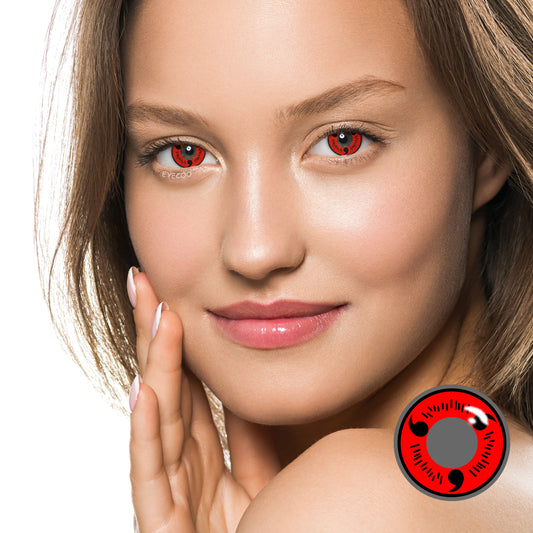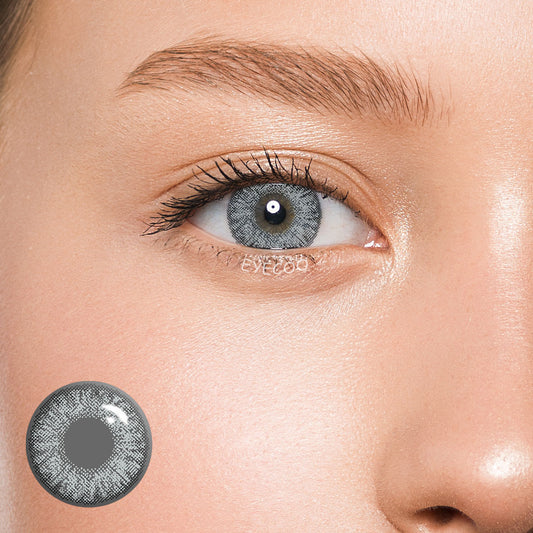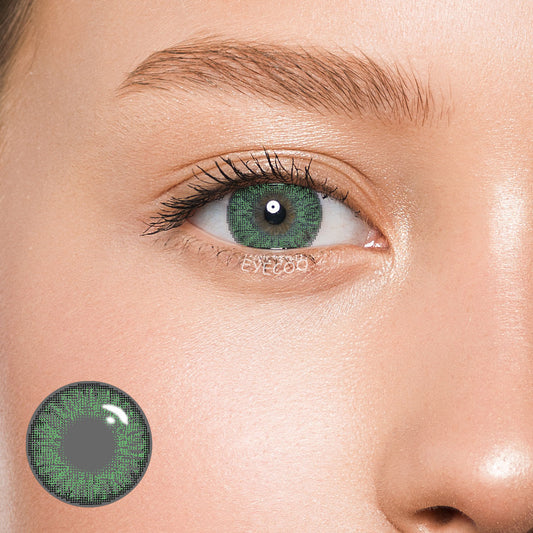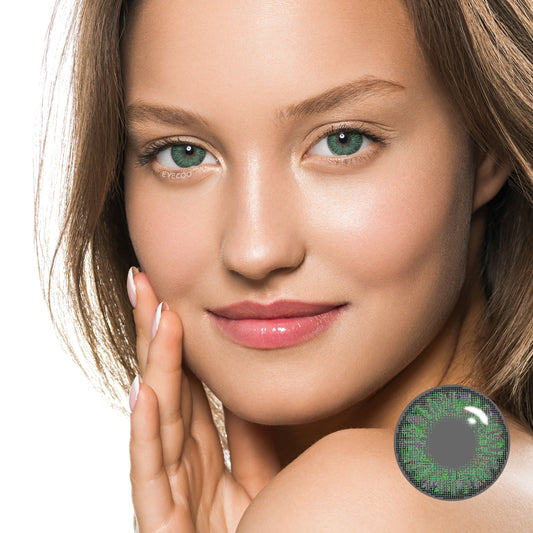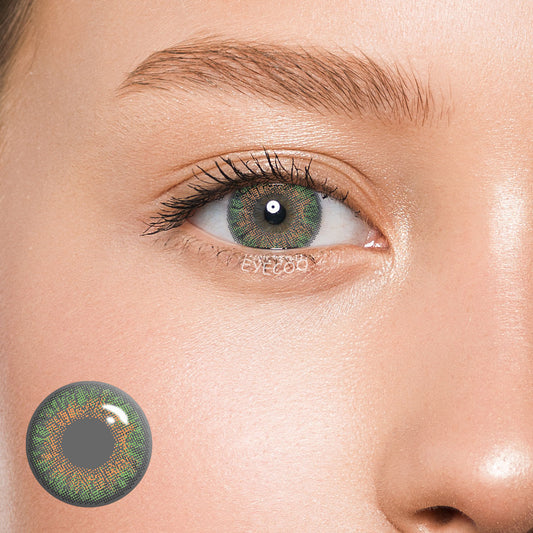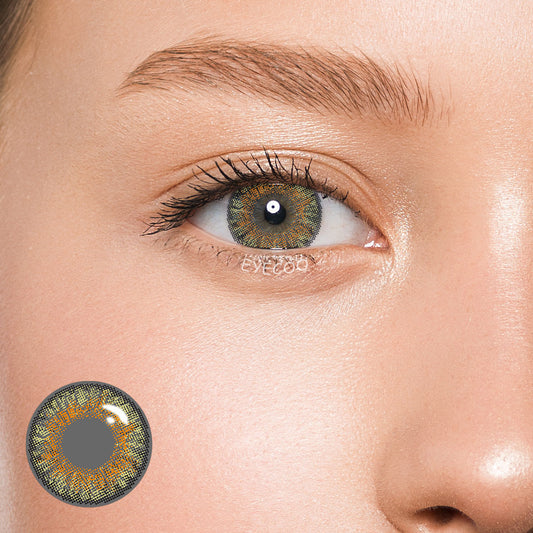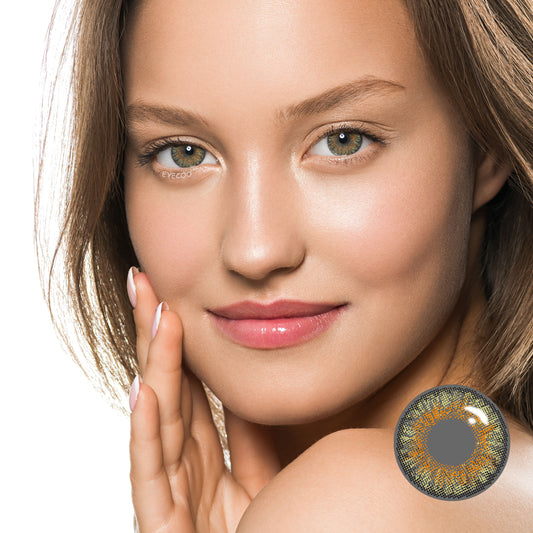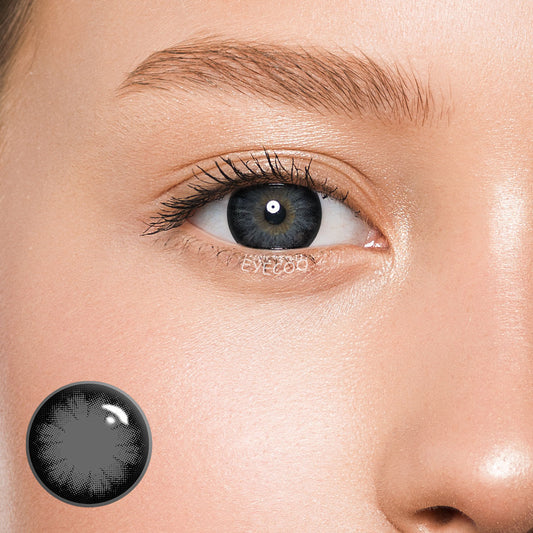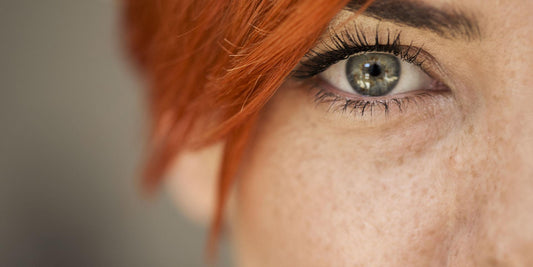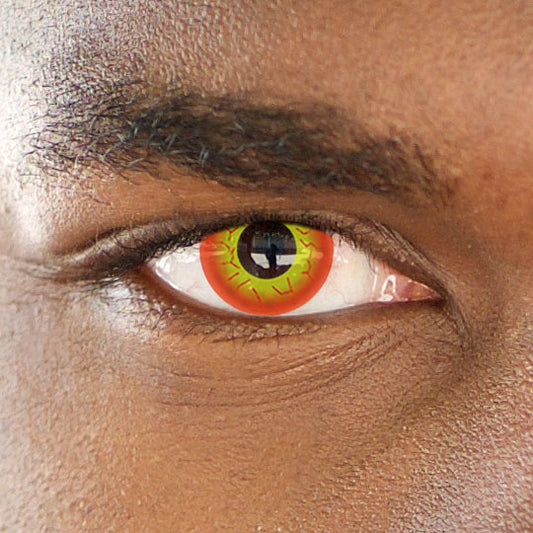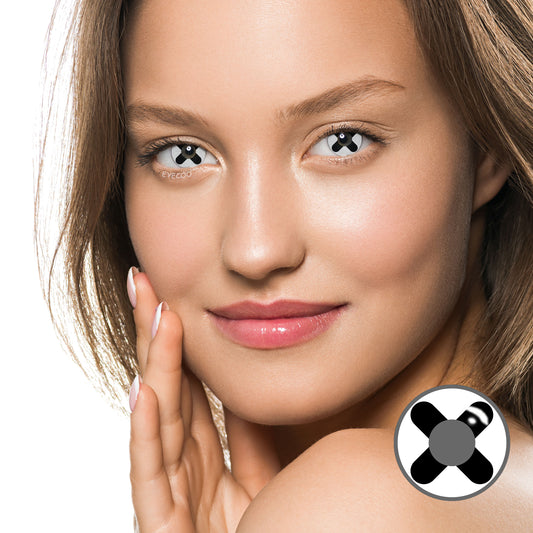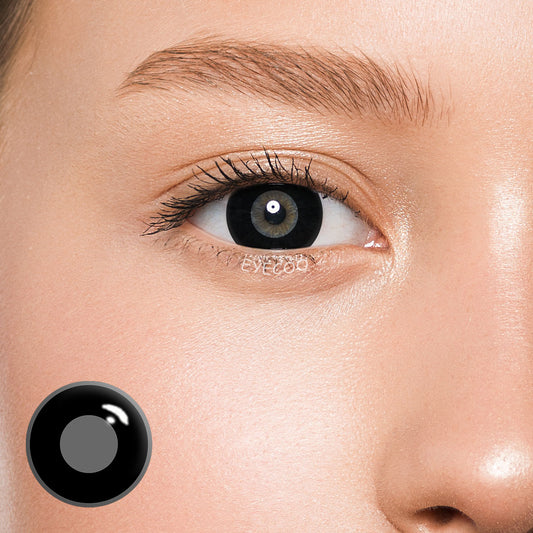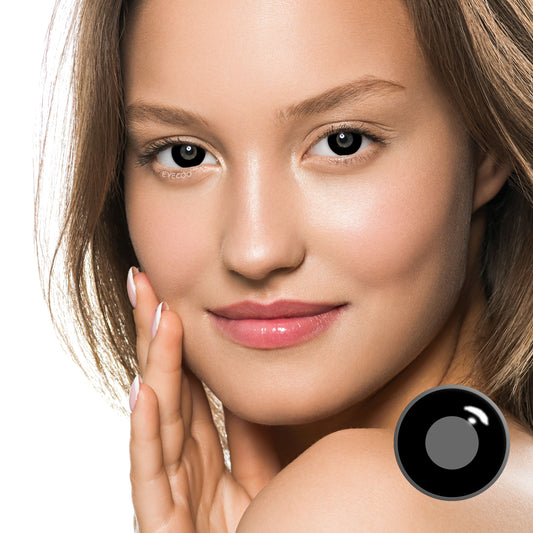
10 Tips for Wearing Contact Lenses
What contact lenses are available, what features do they offer, and what factors are crucial for providing you with better vision?

Who is Suited for Which Type of Contact Lens?
First, you need to know if your prescription can be corrected with contact lenses:
Contact lenses can correct nearsightedness (myopia) and farsightedness (hyperopia), as well as other vision defects like astigmatism and presbyopia. However, it’s not possible to incorporate prism correction in contact lenses to address eye misalignment, known as associated phoria, which can only be corrected with glasses.
Contact lenses are divided into soft and hard lenses:
Soft contact lenses are classified based on how long they can be worn before needing replacement. This is known as the replacement cycle. There are currently four different replacement cycles: daily disposable, which is replaced daily; bi-weekly; monthly; and semi-annual, as well as extended wear lenses that can be worn for up to 30 days without removal.
Hard contact lenses come in two types: standard hard lenses, which are custom-fitted to the wearer's eyes and typically last one to two years depending on the material. These lenses are worn during the day and removed at night. Orthokeratology (Ortho-K) lenses are worn overnight to reshape the cornea, allowing you to go without any vision correction during the day.
Just like with glasses, professional expertise is essential for fitting contact lenses. Your optometrist can provide detailed advice and discuss which type of contact lens best suits your needs. They will also offer tips on how to insert and remove the lenses and recommend the best cleaning methods.
Taking care of your health: As a contact lens wearer, you should have regular check-ups with an eye care professional.
Cleanliness: The Top Priority for Contact Lens Wearers
Maintaining cleanliness is crucial for anyone who wears contact lenses. If you don't clean your lenses properly, your vision quality will suffer, which can lead to irritation, though it may not be immediately harmful. However, not wearing contact lenses is better than wearing unclean ones. Since contact lenses sit directly on your eyes, cleaning and care are absolutely essential. It’s important to wash your hands before inserting or removing your contact lenses, no matter how basic it may seem.
Tap water is not sterile, so always rinse your contact lenses with saline solution and clean the lenses and lens case with an appropriate cleaning solution. It's recommended to replace your lens case with a new one every month. The cap of the cleaning solution container must always remain sterile and should not come into direct contact with your fingers or the lenses. Do not use contact lens cleaning solutions past their expiration date. Immediately clean and disinfect any lenses that you remove manually, and then store them in the lens case.
Always store your contact lenses hygienically in an appropriate lens case filled with storage solution. The solution should be replaced after each use to ensure it remains sterile. Multi-purpose solutions can be used for both cleaning and storing lenses. It's crucial to choose the right cleaning solution for your specific lenses to prevent any harmful chemical reactions.

How Long Should You Wear Contact Lenses? What's Best for Your Eyes?
Contact lenses should not be worn around the clock. It's important to give your eyes a break and let them breathe with some fresh air. Experts recommend wearing contact lenses for no more than 8 hours a day.
However, this is not a strict rule, as the wear time depends on the individual’s situation as well as the type and quality of the contact lenses. Be sure to follow the recommended wear time, cleaning instructions, and expiration dates to avoid irritating your eyes. Before purchasing contact lenses, it's advisable to check their oxygen permeability, as this determines how long you can wear them comfortably. This is indicated by the Dk value (relative dielectric constant). The Dk value is influenced by the material and, to some extent, by the temperature of the lenses. Consult your optometrist for advice.
Continuous wear contact lenses have been developed for people who are allergic to contact lens solutions. If these lenses are suitable for you, let your optometrist know, as these lenses can be worn continuously for up to 30 days without needing to be removed for cleaning and disinfecting.
If you notice any signs of inflammation, irritation, or pain in your eyes, remove your contact lenses and switch to glasses. The same action should be taken if you have a fever or cold. After recovering from an illness, consult your doctor to see if you can continue using the same contact lenses or if it's safer to discard them, especially for monthly or biannual lenses.

4. Dealing with Dry or Tired Eyes While Wearing Contact Lenses
It's undeniable that contact lenses offer more freedom and independence, but they can also lead to a common issue for many wearers: dry eyes. Eye drops can help alleviate this discomfort, but not all eye drops are suitable. Consult your optometrist or ophthalmologist to determine which eye drops are best for use with your contact lenses, as well as the appropriate frequency and dosage.
Taking short breaks from contact lenses by wearing glasses can also provide relief. After a long day at the office, for example, consider placing your contact lenses in a disinfecting solution and switching to glasses in the evening.
5. Teamwork: Not Just Glasses or Contacts, But a Perfect Combination
Research from EYECOO shows that more and more people enjoy wearing glasses, often with a variety of stylish prescriptions. Did you know that some EyeCoo colored contacts are specifically designed to soothe your eyes after wearing contact lenses? EyeCoo colored contacts offer more than just a typical pair of glasses. Their innovative design is specially optimized for the visual behavior of contact lens wearers and the demands of the digital world.
6. The Reverse is Also True: Sports, Swimming, Vacations—Daily Contacts as an Exciting Option for Eyeglass Wearers
Eyeglass wearers can effortlessly switch to daily disposable contacts when needed—such as during vacations or sports activities. In these cases, an optometrist will be happy to help first-time or occasional contact lens wearers choose the right lenses.
Contact lens wearers also need sunglasses. Be sure to select contacts with UV filtering to protect your cornea and inner eye from harmful UV rays. However, even with this protection, contact lens wearers should be cautious of UV exposure: lenses cannot provide full UV protection as they only cover part of the eye. Therefore, sunglasses are essential for contact lens wearers too.
7. Colored Contacts for Special Occasions
Colored contact lenses are incredibly popular and are available with or without prescription strength. Do you want to catch someone's eye with bright blue eyes at a special event, or perhaps stand out at a dinner party with dazzling green eyes that complement your stunning evening gown? Or maybe you're looking to make an impact with sinister cat eyes as the finishing touch to your Halloween costume? With colored contacts, all of this is possible. Be bold—give it a try yourself! Eyes can speak volumes. Just like clear lenses, colored contacts require the same level of care: thorough cleaning with the right solution is essential for maintaining eye health.

8. Wearing Contact Lenses Overnight—What Do the Experts Say?
Some nights just aren’t meant for sleep, and during those times, we might forget that we're still wearing contact lenses. After a long night out, where should we put our contacts? Even in situations like these, it’s important to think about how your eyes will feel the next day. For both daytime and nighttime, especially in such circumstances, it's best to use daily disposables. Remember to thoroughly clean your hands to prevent infection. However, dirt and loss aren’t the primary concerns with daily lenses; you can simply discard them without needing to disinfect. Afterward, you can make a statement by wearing stylish glasses with ultra-thin lenses. The combination of glasses and contact lenses really shines!
9. Modern Digital Vision—What Has Changed?
We quickly check emails or WhatsApp messages, watch videos on YouTube, engage in digital conversations with friends, or read books on tablets. Digital devices like smartphones and e-readers have become as integral to our daily lives as handbags, newspapers, or car keys. But this shift brings challenges for our eyes. These digital devices require us to view content up close, much closer than when reading a book, forcing our eyes to switch between near and far vision more frequently than before. The modern visual demands of the digital age require us to maximize our eye usage, which is true for contact lens wearers as well. Glasses can provide comfortable relaxation! Prolonged use of smartphones, tablets, or similar digital devices may lead to eye fatigue or strain. ZEISS EnergizeMe lenses, designed specifically to meet the needs of contact lens wearers, use special technology to make reading books and using various digital devices easier, serving as an excellent way to prevent digital eye strain.
10. Progressive Contact Lenses—One Lens with Multiple Prescriptions
Presbyopia is a condition that affects almost everyone as they age. We need progressive lenses that offer vision support for near, far, and intermediate distances. For contact lenses, progressive or multifocal options can be a great solution. There are various versions available to choose from. The simplest solution might be combining distance vision contact lenses with reading glasses. Alternatively, using a single vision approach, where one eye is corrected for near vision and the other for distance vision, allows the brain to adjust. However, your 3D vision might be slightly affected, and the difference between the right and left eye prescriptions shouldn't be too great.
The “synchronous system” uses contact lenses that alternate between different prescriptions for near and far vision within a single lens. Various designs are available. In some designs, the distance range is in the center, with the near vision area on the outside. There are even lenses with rings for transitional zones or with alternating degrees in concentric rings. Two prescriptions can be seen simultaneously. Our brain adjusts to seeing the “correct” images for near and far distances.
The key takeaway: you need to try and consult with experts. Not everyone can adapt to this type of lens.


